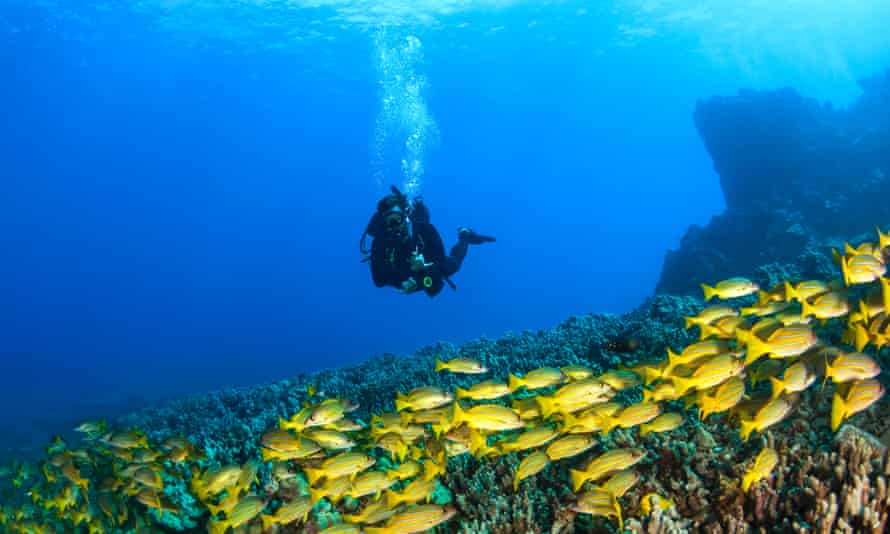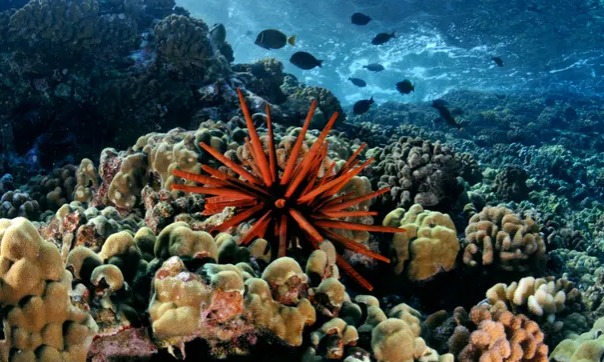The popping sound, like milk hitting puffed rice cereal, that you hear when putting your head underwater is not your ear adjusting to a different atmosphere – it is the sound of the submarine world. Fish chat to each other, or move water with their fins; hard-shelled creatures scrape against the surfaces; molluscs drag themselves to their nooks.
There’s more to these clicks, clacks and pops than just the tuneful wonder of it all. Oceanographers now say that monitoring the sounds of coral reefs can serve as a non-intrusive, inexpensive and efficient method for tracking the state of their health – and for planning better conservation interventions in the long run.

New research shows that degraded coral communities do not sound as crackling and vibrant as healthy ones because thereduced biodiversity means less activity, so you can in effect judge the health of a reef by its decibel level.
“Soundscaping gives us this really nice heartbeat of what’s going on on the reef,” said Lauren Freeman, senior oceanographer at the Naval Undersea Warfare Center while presenting these findings to the Acoustical Society of America. “And our coral reefs are under quite a bit of duress from overfishing, from pollution [and] from climate change.”Advertisement
Freeman and her team monitored acoustics in reefs off Hawaii between 2019 and 2020, comparing them to soundscapes from the ocean near Bermuda and New England. They immersed underwater microphones for up to six months and recorded soundscapes at intervals.
By breaking down the resulting sounds and analysing it by the microsecond, they attempted to reconstruct what was happening underwater: different fish species feeding, whales passing by, boat engines roaring in the distance.
Most reefs are full of noise when it is warmer, and immediately before the sun sets and rises. Hotter weather tends to correlate with moments of greater activity among ecosystems –– many species give birth in spring, for example –– while dusk and dawn represent a sort of underwater “rush hour” between diurnal and nocturnal creatures, said Freeman.
Unhealthy coral communities sound less vibrant and also emit more high-frequency sounds, the researchers found. While healthy reefs give readings 0f 2-8 kilohertz, less diverse reefs tend to be above 12kHz, as they become overpopulated with macroalgae, which create bubbles of oxygen that float to the surface and pop, making a specific high-frequency sound.
The findings will help more researchers use soundscapes to study reefs, –and to monitor the progress of restoration projects already under way. Traditional surveying of reefs presents many challenges: expenses for boats and crews, time limitations for divers underwater, the small areas of reef that can be covered, and the fact that there are simply too many reefs to monitor. Sound surveys could change all that.
Katey Lesneski, director of restoration science at Coral Vita, a land-based coral farm for reef restoration, was not involved in the study but said more research would be needed to characterise what a healthy reef sounds like in different regions of the world.
It did, however, show promise. “This type of data collection has the potential to be highly cost-effective, cover a large area and be a constant source of information, as opposed to intermittent diving surveys,” she said.




